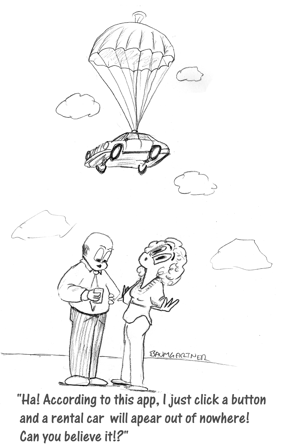 Too Many Ideas? Make a Plan Instead
Too Many Ideas? Make a Plan Instead
By Jeffrey Baumgartner
Does your organisation generate too many ideas that never seem to go anywhere? If so, you're not alone. Most innovation managers I speak to have told me this is one of their biggest challenges. Fortunately, the solution is not difficult: collaborate on a creative plan rather then a collection of ideas.
This concept was proposed by Fernando de Sousa in Report 103 as an alternative approach to Creative Problem Solving (CPS) and in a paper he co-wrote ("Adapting Creative Problem Solving to an Organizational Context: A Study of its Effectiveness with a Student Population")*. Instead of using "In What Ways Might I [we]..?" (IWWMI) as the formulation to seek ideas, Fernando proposes using "What Are the Steps Needed To..?" (WASNT) with the aim of generating steps that can then be ordered to create an action plan. Not surprisingly, this approach leads to results that are more likely to be implemented than does traditional CPS.
It is easy to see the appeal of the WASNT approach. Rather than finishing an ideation session with a long list of ideas or dozens of sticky notes, you end up with the steps you need to take to implement something new. Of course creative purists will argue that by focusing on an action plan rather than generating lots of ideas, you might miss out on some creative ideas. And, of course, they are correct. However, as a manager, you know that a moderately creative idea implemented is worth far more, in terms of innovation, than is a database full of more creative but unrealised ideas.
Methods
Let us imagine that you manage a car rental company and have decided to build a mobile phone app. In a typical brainstorm, you might ask, "What features might we include in the app?" or, using traditional CPS formulation, "In what ways might we make a mobile app that is useful to our customers?" Either of these approaches might result in a lot of ideas. If we want to skip the ideas and go directly to planning, there are a few options. Here are three suggestions.
1. WASNT
Using the WASNT approach, you might pose the challenge, "What are the steps needed to develop and launch a mobile app for our customers?" Steps are suggested, then organised and combined into an action plan.
2. Call to Action + ACT
Instead of using CPS, I would propose creating a sexy goal, such as "Plan a mobile app that is as compelling to use as Angry Birds [or any compulsively popular game] and as practical as GPS" and then using anticonventional thinking (ACT) to develop the plan.
3. Map to Implementation
On a large table, clean floor or other large surface, place at one end a sheet of paper with the words "We are here" on it. At the other end, place a piece of paper with the words "Fun and useful app available for download." Then provide the team with smaller sheets of paper on which they can write steps that need to be taken to get from "We are here" to "Fun and useful app available for download."
Boost Creativity
The downside to these approaches is that because they focus on implementation planning rather than ideation, it would be easy to focus on a conventional design and lose the potential of creative thinking. To prevent this, you need to formulate your WASNT statement, sexy goal or endpoint in your map in a way that inspires creativity.
For example, ACT uses sexy goals to encourage the mind to think less conventionally. This approach can be used in any creative collaboration. For instance, "What are the steps needed to provide our customers with an app that makes renting a car from us easier than making a cheese sandwich?" Or, create as an endpoint (in Map to Implementation), "Availability of an app that wins awards for customer service even when no humans are involved".
Such approaches push the mind to think about the goal, of an available app, in new ways which, in turn, inspires creativity. In addition, you can encourage creative thinking during the planning stage by explicitly rewarding creative steps, asking people how they might make a step more creative and stressing originality over corporate thinking.
Preplanning Your Planning
In order to formulate relevant WASNT statements, sexy goals or endpoints, you need to do some preparation in order to clarify why you want to make this app, the expected benefits and whether it is even necessary. ACT's first phase, of playing with a situation in which you wish to take creative action, provides a good model for preplanning.
To summarise, if your ideation activities result in too many ideas and not enough action, the obvious step is to skip the ideas and focus on the action instead. The result may be a lower degree of creativity but a higher likelihood of implementation. Moreover, you can boost creativity by formulating a sexy goal that inspires creativity.




